Search
Search Results
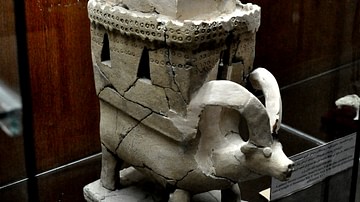
Image
Mesopotamian Incense Container
A pottery incense container found at layer 5 of the altar platform of the central temple of Basmosian Hill, Mesopotamia, Hurrian period, 2nd millennium BCE.
Sulaimaniya Museum, Iraq.
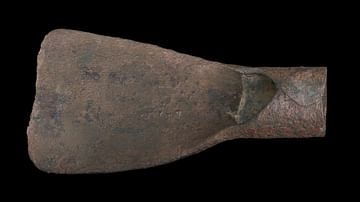
Image
Mesopotamian Hoe
Copper alloy hoe blade with socket, from Ur, Early Dynastic III, 2600-2300 BCE.
The British Museum, London.
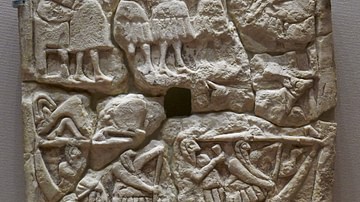
Image
Mesopotamian Banquet Scene
Perforated votive plaque with a banquet scene, Mesopotamia, modern-day Iraq, c. 2700-2600 BCE.
Louvre, Paris.
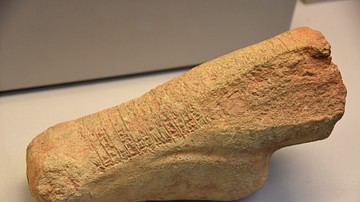
Image
Inscribed Part of a Mesopotamian Hound
The hindquarters of a terracotta statue of a sitting dog. The inscription mentions that it was dedicated to the goddess of healing, Gula, by an official, Ninurta-Resushu, for his king Nazi-Maruttash. The goddess Gula was usually shown with/represented...
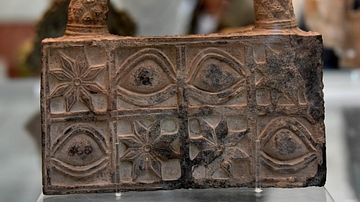
Image
Mesopotamian Carved Stone with Integral Handle
This carved grey stone has an integral handle. It was possibly a weight. There are eight compartments decorated with the shapes of eyes and rosettes. The handle imitates basketry and is ornamented with lozenges in relief. The stone might...
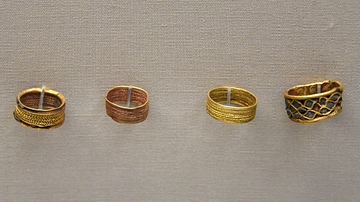
Image
Mesopotamian Finger Rings
These rings were found on the fingers of a woman named Puabi, inside her grave. Puabi was a Semitic Akkadian woman from Ur, c. 2600 BCE, possibly a queen or priestess. Two rings were made of gold wire that was twisted before being wound...
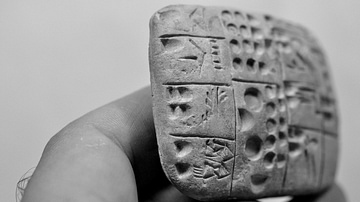
Image
Side View, Illegally Excavated Mesopotamian Clay Tablet
This clay tablet was illegally excavated. The precise provenance of the excavation is unknown, but probably from Southern Mesopotamia, modern-day Iraq. It is currently housed in the Sulaymaniyah Museum, Iraqi Kurdistan.
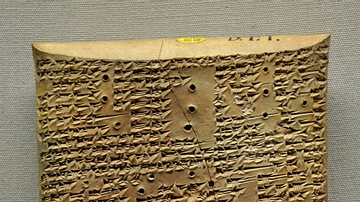
Image
Advice to a Mesopotamian Prince
The cuneiform inscription on this clay tablet claims various exemptions for the cities of Babylon, Nippur, and Sippar and warns rulers against disregarding them. This is a copy which was made about 700-650 BCE of an earlier composition. From...
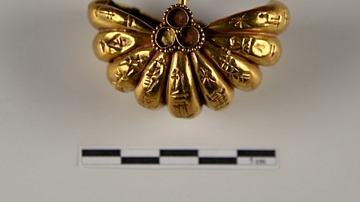
Image
Mesopotamian Gold Earring, Ur III
This is the upper surface of the earring . The right lower circle is broken and at the center of the trifoliate group lies a single golden sphere. The cuneiform text is read vertically, from the upper surface downwards on each segment, and...
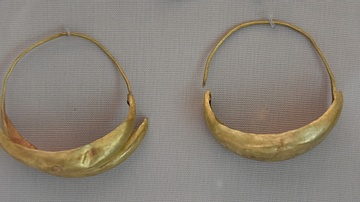
Image
Mesopotamian Gold Earrings
This is a pair of gold boat-shaped earrings, worn by one of Queen Puabi's attendants and was found inside Puabi's grave. Early Dynastic Period, circa 2600 BCE. From the Royal Cemetery at Ur, Southern Mesopotamia, modern-day Iraq. Part of...